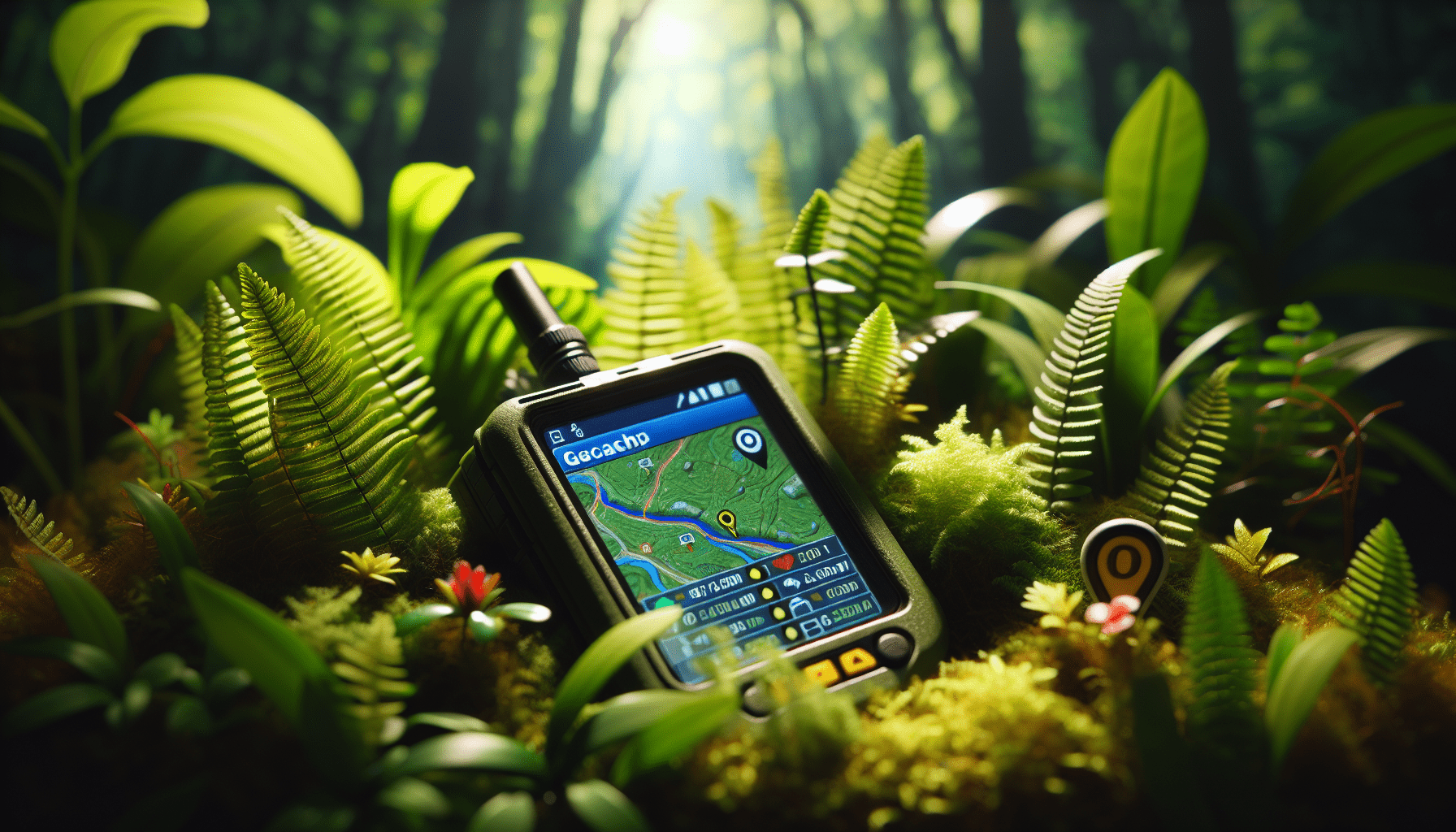Imagine embarking on a thrilling outdoor treasure hunt where you become the explorer of your own story. Geocaching, an exciting activity gaining popularity worldwide, combines technology, nature, and the thrill of discovery into an unforgettable adventure. This article takes you on a journey through the world of geocaching, providing tips and tricks to plan your next exhilarating expedition. Get ready to uncover hidden treasures, explore stunning landscapes, and create cherished memories that will last a lifetime.
Choosing a Geocaching Destination
When planning your geocaching adventure, it’s important to start by researching popular geocaching locations. Look for areas that have a high density of geocaches and good reviews from other geocachers. Websites and apps dedicated to geocaching can provide valuable information and recommendations from the geocaching community. Consider locations that offer a mix of different types of geocaches, such as urban caches, rural caches, or those hidden in natural landscapes.
Accessibility and difficulty levels are also crucial factors to consider when choosing a geocaching destination. Determine the physical abilities and limitations of your team so that you can choose locations that everyone can enjoy. Some geocaches may require hiking, climbing, or crossing difficult terrain, so be sure to assess the difficulty ratings and terrain descriptions for each cache.
Before finalizing your destination, check if any of the geocaches require permits or special permissions to access. Some caches may be located on private property or within protected areas that have specific rules and regulations. Always make sure to adhere to any permit requirements to ensure a smooth and legal geocaching experience.
One of the best ways to get a sense of what a geocaching destination has to offer is by reading reviews and recommendations from other geocachers. Their insights can provide valuable information about the quality of the caches, the surrounding scenery, and any potential challenges. Additionally, these reviews may offer tips and tricks that can enhance your geocaching adventure.
Determining the Duration of the Adventure
When planning a geocaching adventure, consider the duration of your trip. Decide whether you want to embark on a single-day expedition or a multi-day adventure. The duration will depend on the distance you need to travel and the number of geocaches you intend to find.
If you’re planning a multi-day trip, it’s important to plan for breaks and rest stops. Take into account the physical exertion of hiking and searching for caches, as well as the time needed to rest and recharge. Additionally, consider travel time between geocaching locations and factor that into your schedule.
Creating a Geocaching Itinerary
To make the most of your geocaching adventure, it’s recommended to create a geocaching itinerary. Start by identifying the specific geocaches you want to target. Consider their difficulty ratings, terrain descriptions, and the types of caches involved. This information will help you plan your route and determine the key points of interest along the way.
Mapping out your geocaching route is essential for staying organized and efficient. Use a map or GPS device to mark the locations of the caches and include any attractions or points of interest you want to visit along the way. This will help you visualize your adventure and make informed decisions about the best path to take.
Setting a realistic schedule for each geocache is important to ensure that you have enough time to thoroughly search for the cache and enjoy the surroundings. Consider the difficulty rating, terrain, and any additional activities or attractions at each location. It’s also wise to allow for flexibility in your itinerary to accommodate unexpected discoveries or changes in plans.
Gathering the Right Equipment
Having the right equipment is crucial for a successful geocaching adventure. Whether you choose to use a GPS device or a smartphone app, make sure you have a reliable navigation tool that can accurately guide you to the geocaches. Familiarize yourself with its functions and features before embarking on your adventure.
Carrying spare batteries or a portable charger is essential to keep your GPS device or smartphone powered throughout the day. The last thing you want is for your battery to die in the middle of a geocaching expedition. Additionally, don’t forget to pack a pen or pencil for signing the logbooks in the caches.
A backpack is an essential piece of equipment for geocaching. It allows you to carry snacks, water, and any necessary supplies for the adventure. Pack enough food and water to keep you hydrated and energized throughout the day. Additionally, consider bringing a first aid kit and any personal items you may need, such as sunscreen, bug spray, or a hat.
Understanding Geocache Types and Difficulty Levels
To fully immerse yourself in the geocaching experience, it’s important to understand the different types of geocaches and their difficulty levels. Traditional caches are the most common type and typically involve finding a physical container hidden at specific coordinates. Multi-cache and mystery caches, on the other hand, require solving puzzles or following multiple stages to locate the final cache.
When planning your geocaching adventure, consider the difficulty ratings assigned to each cache. The ratings range from one to five stars, with one being the easiest and five being the most challenging. Challenging yourself with higher-rated caches can add excitement and a sense of accomplishment to your adventure. However, it’s important to find a balance and include a variety of cache types and difficulty levels to ensure a diverse and enjoyable experience for everyone on your team.
Preparing for Weather Conditions
When planning a geocaching adventure, it’s crucial to be prepared for various weather conditions. Check the weather forecast in advance to get an idea of what conditions you may encounter during your trip. Dressing in layers allows you to adjust your clothing based on the temperature and weather changes throughout the day.
Regardless of the forecast, it’s always wise to bring rain gear or sun protection, depending on the climate and season. Having a waterproof jacket, umbrella, or sunscreen can save you from getting soaked or sunburned during your adventure. It’s also a good idea to pack extra clothes in case you get wet or need a change.
In extreme weather conditions such as storms, extreme heat, or blizzards, it’s essential to prioritize safety. Have alternative activities planned in case the weather becomes too dangerous to continue geocaching. Research indoor attractions, museums, or local landmarks that you can visit instead.

Informing Others about the Adventure
Before heading out on your geocaching adventure, make sure to inform your family or friends about your plans. Share with them the details of your itinerary, including the geocaching destinations, the duration of your trip, and any specific safety precautions you are taking. This ensures that someone knows where you’ll be and can provide assistance if needed.
Leave a copy of your geocaching itinerary with a trusted person, such as a family member or a close friend. This ensures that there is a backup record of your plans in case you lose your own copy. Be sure to include emergency contact information in case of an unforeseen event or emergency.
In addition to informing your loved ones, consider notifying local authorities or park rangers about your geocaching expedition. Provide them with details about your itinerary, the areas you’ll be visiting, and your contact information. This helps ensure that local authorities are aware of your presence and can provide assistance if necessary.
Respecting Nature and Geocaching Etiquette
Geocaching is an outdoor activity that encourages exploration and adventure while fostering a respect for nature. It’s important to stay on designated trails and avoid sensitive areas to minimize impact on the environment. By sticking to established paths, you help preserve natural habitats and prevent erosion.
Practicing Leave No Trace principles is crucial when geocaching. This means leaving the geocache and its surroundings exactly as you found them. Avoid littering, defacing natural features, or disturbing vegetation and wildlife. Respect the cache’s original placement and surroundings to ensure a positive geocaching experience for others.
When geocaching in natural habitats, be mindful of noise and disturbances to wildlife. Keep voices low and avoid sudden movements that may startle animals. Observing wildlife from a distance and without causing harm is the best way to appreciate and interact with the natural environment.

Collaborating with Other Geocachers
Geocaching is a community-driven activity, and collaborating with other geocachers can enhance your experience. Joining geocaching communities or online forums allows you to connect with fellow enthusiasts, exchange tips and advice, and learn about new geocaches in your area.
Attending local geocaching events or meetups provides an opportunity to meet other geocachers in person and share experiences. These events often include geocaching challenges, trackable exchanges, and valuable insights from experienced geocachers. Participating in these activities allows you to expand your knowledge and build connections within the geocaching community.
If you’re new to geocaching or seeking advice, don’t hesitate to reach out to experienced geocachers. They can offer valuable tips, recommendations, and insights based on their own experiences. Don’t be afraid to ask questions and engage in conversations about geocaching techniques, equipment, or specific locations.
Documenting the Geocaching Adventure
To preserve the memories of your geocaching adventure, consider documenting it in various ways. Taking photos of interesting locations, unique hides, or exciting finds can capture the essence of the experience. These photos can serve as a visual record and a way to share your adventure with others.
Recording memorable moments in a geocaching logbook is another way to document your journey. Sign the logbook of each geocache you find and include any notes or reflections about the experience. This creates a personal record of your progress and serves as a reminder of the treasure hunt you embarked on.
Sharing your geocaching experiences on social media or a personal blog allows you to connect with a wider audience of fellow geocachers and outdoor enthusiasts. Describe your adventure, highlight your favorite caches, and share any interesting anecdotes or challenges you encountered along the way. Utilize hashtags and geocaching communities online to connect with other enthusiasts who share your passion.
If you’re looking for a more tactile way to remember your geocaching adventure, consider creating a scrapbook or photo album. Print out photos, include handwritten notes, and add any mementos you collected during your journey. This creative project can serve as a physical reminder of the memories you made while geocaching.
Conclusion
Planning a geocaching adventure involves careful consideration of various factors, from choosing the right destination and determining the duration of the trip to gathering the necessary equipment and understanding geocache types. It’s essential to be prepared for weather conditions, inform others about your plans, and respect nature while geocaching. Collaborating with other geocachers and documenting your adventure allows you to enhance the experience and create lasting memories. So, get ready to embark on an exciting geocaching adventure, exploring hidden treasures and discovering the beauty of the outdoors!




